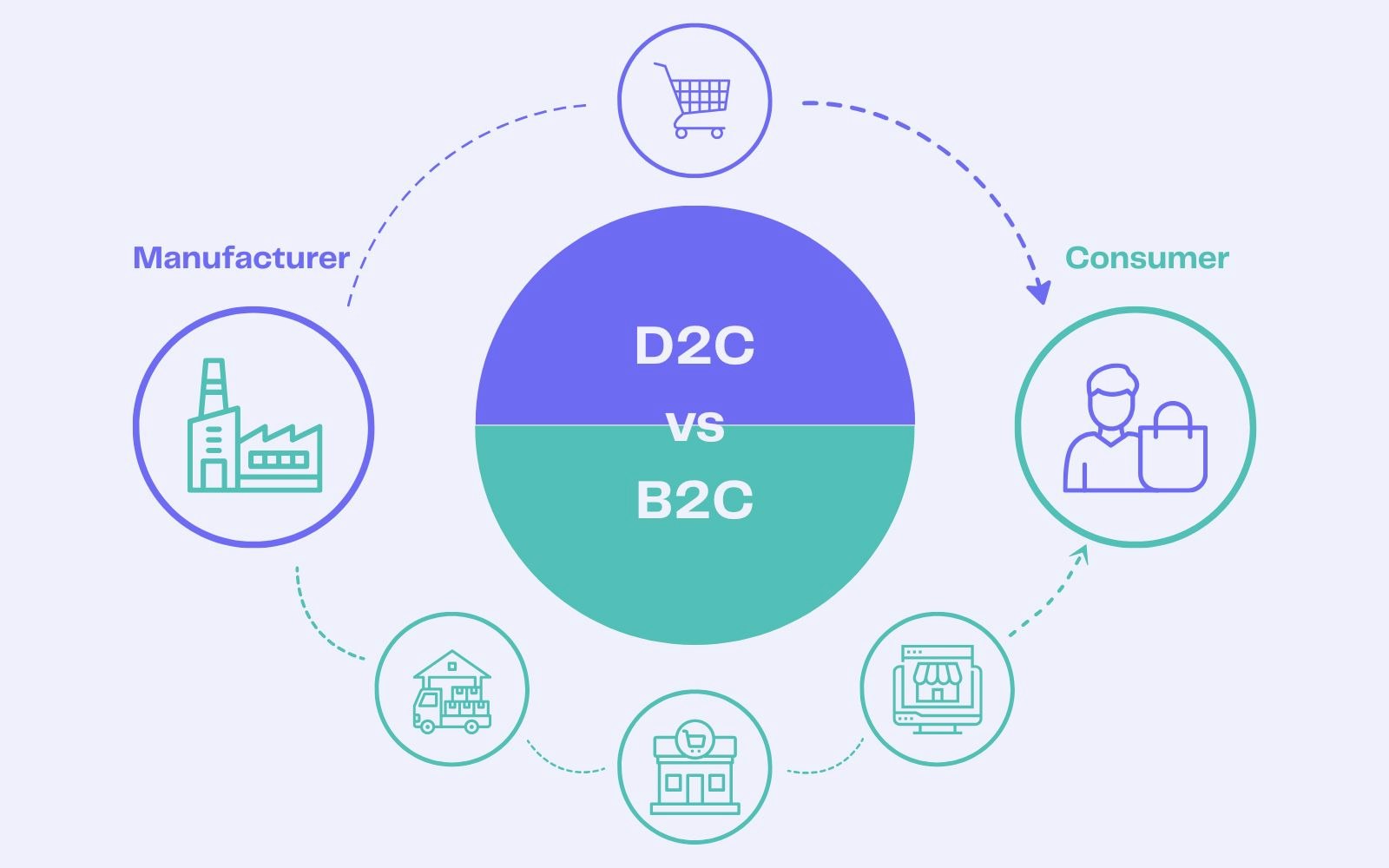
Bridging strategic and tactical marketing in the age of data
6min • Last updated on Nov 28, 2025

Olivier Renard
Content & SEO Manager
Abercrombie & Fitch is a brand that leaves no one indifferent. Known for its provocative image and dark retail stores, the American label has undergone a well-noticed shift in direction.
By rethinking its positioning, product offering, and customer experience, it has managed to return to success — a strategic pivot made necessary by changing market dynamics.
This adjustment highlights both the difference and the complementarity between strategic marketing and tactical marketing.
Key Takeaways:
Strategic marketing defines long-term direction, while tactical marketing translates this overarching vision into short-term, tangible actions.
These two approaches are complementary: when well aligned, they enhance consistency, efficiency, and overall performance.
Data plays a central role at every stage: strategic analysis, customer insight, segmentation, targeted activation, impact measurement…
Success depends on team alignment around shared objectives, and on having the right tools to bridge strategy and execution.
👉 What are the differences between strategic and tactical marketing, and how can they be effectively coordinated? Discover how each works, how they interact, and how data supports both analysis and action. 🎯
What’s the difference between strategic and tactical marketing?
Managers must clearly distinguish operational effectiveness from strategy.
Michael E. Porter
These two approaches follow distinctly different logics.
Strategic marketing sets the course. It analyses the market, identifies opportunities, defines positioning, and outlines major directions. It’s a long-term process focused on building a sustainable, competitive vision for the company.
Tactical marketing, or operational marketing, is about implementation. It turns strategic direction into action plans, campaigns, messaging, and measurable activities. It’s a short- to medium-term approach focused on execution: which channels to activate, what budgets to allocate, which outcomes to pursue?

Strategy vs Tactics
💡 Example: a company seeking to enter a new market defines its strategy and then translates it into concrete actions across the various pillars of the marketing mix.
Strategic marketing will define the target audience, value proposition, and growth objectives. Tactical marketing will then determine which levers to activate — advertising, promotions, emails, partnerships, etc.
Criteria | Strategic marketing | Tactical marketing |
|---|---|---|
Description | Defines the company’s broad marketing direction over the medium to long term. | Implements the specific actions laid out in the marketing plan. |
Main objective | Analyse the market, segment audiences, and define a unique positioning. | Achieve strategic goals through targeted campaigns and activities. |
Methods and tools | Market research, SWOT, PESTEL, Porter’s Five Forces, personas, segmentation, OKRs, CLV. | Marketing mix, media plan, CRM, automation, A/B testing, SEO, SEA campaigns, KPIs. |
Key metrics | Market share, brand awareness, customer lifetime value (CLV), customer satisfaction (NPS, CSAT), North Star Metric. | Conversion rate, campaign ROI, email open rate, average basket size. |
Role of data | Helps understand behaviour, segment audiences, and anticipate trends. | Enables targeting, personalisation, and performance tracking of marketing activities. |
Examples | Defining a new product line’s positioning. | Launching a personalised email campaign or online promotion. |
Comparison between strategic marketing and tactical marketing
How can the two approaches be aligned?
Every company needs two marketing departments, one that has mastered the tactics of getting rid of today’s products and the other that has mastered the strategy of imagining tomorrow’s products.
Philip Kotler
As you will have gathered, there is little point — and even risk — in pitting strategic and tactical marketing against each other. The two approaches are not mutually exclusive but complementary.
The first defines the long-term vision and objectives, and sets the OKRs (Objectives and Key Results). The second translates them into concrete actions with short- or medium-term outcomes.
As with any good recipe, an effective strategy requires careful preparation, end-to-end follow-through, and the right mix of ingredients:
In-depth market analysis,
Clear target definition,
A structured marketing plan,
Coordinated campaign execution,
Ongoing performance monitoring,
Capacity for continuous optimisation.
Moving from strategy to execution requires tight coordination between teams. Any misalignment will inevitably lead to actions that lack coherence and impact.
The risks are real for the business: ineffective campaigns, misallocated budgets, and even a loss of competitiveness.
Applications in B2C, B2B, and D2C
Let’s look at some use cases across different business models:
Launching a new product in B2C
Strategic side: A cosmetics brand specialising in hair care identifies, through market research, a strong demand for natural products. It develops a dedicated line with tailored ingredients and packaging.
Operational side: The launch is supported by a targeted Instagram campaign with UGC content, in-store sampling, and a series of explainer videos.
B2B: Expanding into a new market
Through strategic analysis, a European SaaS provider specialising in accounting solutions identifies strong potential in the Canadian market. Following a competitive study, the offering is adapted to meet local technical and regulatory requirements.
Operationally, the company launches a targeted LinkedIn campaign featuring local customer testimonials, a webinar hosted by a Canadian partner, and a bilingual SDR to handle sales follow-up.
Shifting from traditional distribution to a D2C model
A clothing brand with a retail-based model sees declining sales. To reclaim customer relationships and respond to the rise of DNVBs, it pivots strategically to a direct-to-consumer (D2C) model.
The strategic team refines the product range around customisable items and repositions the brand with a clear promise. An e-commerce platform is launched, personas are defined, customer expectations analysed, and a roadmap put in place.
Tactical side: Launch campaigns are deployed across social media, featuring authentic content that highlights the brand’s heritage. Marketing activations include personalised recommendations, introductory offers, and immersive events.

D2C vs B2C
The role of data in both types of marketing
With the rise of data-driven marketing, data bridges the gap between long-term vision and short-term action.
On the strategic side, data helps understand customers better, anticipate trends, and inform positioning decisions. Behavioural studies, segmentation, customer lifecycle analysis (CLV) — all provide insights that support informed choices.
On the tactical side, data enables campaign personalisation, message tailoring, and precise performance measurement. Activations rely on reliable data and connected tools: Business Intelligence platforms, Reverse ETL, and Customer Data Platforms (CDPs).
💡 The composable CDP DinMo helps unify your customer data, create no-code dynamic segments, and activate them automatically across the right channels. With more targeted communication and more effective marketing, brands can deliver personalised experiences at scale.
Best practices to align strategy and tactics
A few simple principles help prevent disconnect between vision and execution:
Set clear, shared objectives: OKRs, North Star Metrics, SMART goals. These frameworks ensure unified direction and day-to-day consistency.
Ensure smooth data flow: If each team uses different data, decisions become misaligned. Collaborative tools and shared data sources are essential.
Involve business teams early in the strategy process: Engaging them from the outset fosters buy-in and ensures plans are grounded in field realities.
Measure and adjust continuously: No marketing plan is static. It must evolve based on customer feedback, performance, and new data.
Conclusion
Strategic and tactical marketing move forward hand in hand. One cannot succeed without the other. The challenge for any organisation is to align vision with action.
By leveraging data at every stage, companies gain in agility, consistency, and performance. This synergy is what enables them to meet customer expectations and reach their goals.
👉 Want to go further? Discover how DinMo helps teams unify their data and launch high-performing marketing campaigns. Don’t hesitate to get in touch!
FAQ
What are the essential tools for aligning strategy with marketing execution?
What are the essential tools for aligning strategy with marketing execution?
To align strategy and operations, teams rely on collaborative tools (Notion, Asana), customer data solutions (CRM, CDP), and analytics platforms (BI, dashboards).
Data flows must be synchronised between long-term vision (goals, segments) and concrete actions (campaigns, targeting) to ensure consistency, efficiency, and real-time monitoring.
How does data help improve marketing decisions?
How does data help improve marketing decisions?
Data allows for decisions based on reliable information, not assumptions. It sharpens customer insight and makes performance measurable.
These insights inform strategy (segments, expectations, behaviours) and optimise operations (targeting, personalisation, timing). With data marketing, companies act on real signals, reduce guesswork, and continuously refine their plans.
What common mistakes undermine the alignment between strategic and tactical marketing?
What common mistakes undermine the alignment between strategic and tactical marketing?
Among the most frequent pitfalls:
– Developing strategies disconnected from on-the-ground realities
– Working in silos
– Overlooking data sharing
– Lacking shared performance indicators
These issues lead to inconsistencies, reduced impact, or inefficient execution. Strong day-to-day alignment and clear communication are key to avoiding these obstacles.





















